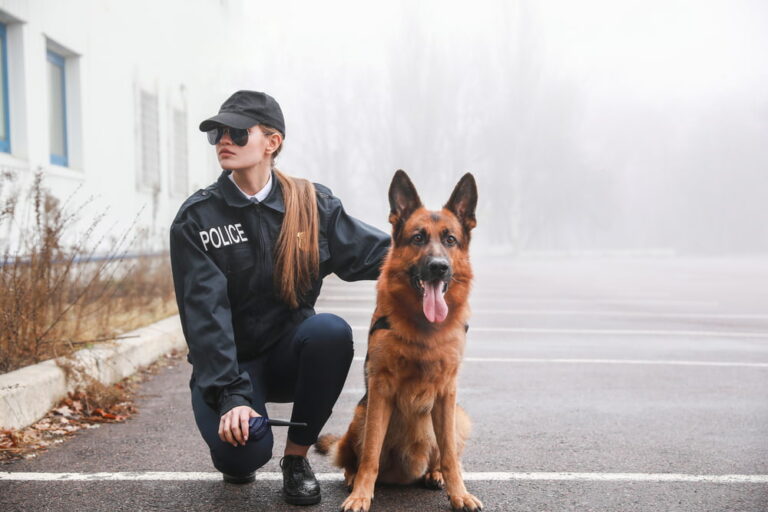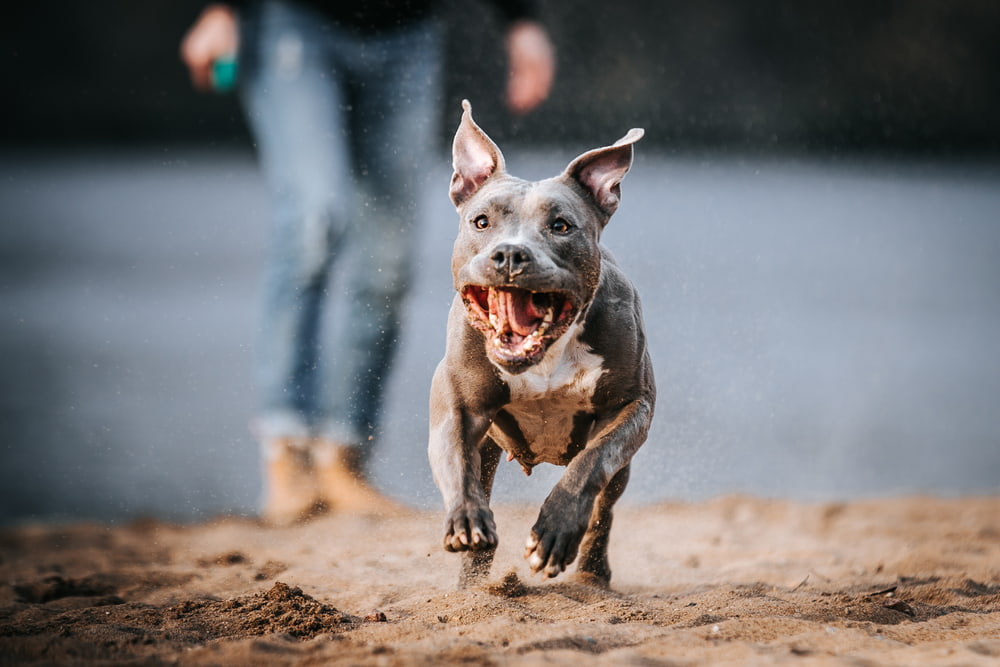6 Police Dog Breeds That Help Law Enforcement

Dogs have been formally called on to help police fight crime and track down suspects since the late 1880s, though their role in serving and protecting humans goes back many centuries earlier than that.
More recently, police dogs’ work has expanded to mirror almost everything their human counterparts do—from apprehending suspects and patrolling, to assisting on search and rescue missions, to sniffing out drugs, guns, and bombs. It’s nuanced and demanding work, requiring a special temperament and skillset, which is why you’ll see certain breeds used as police dogs again and again.
Still, experts agree that breed alone doesn’t automatically qualify a dog for police work, nor does a less common K9 breed rule one out. “Yes, we’re drawn to certain breeds because we know what their characteristics usually are,” says Shana Parsnow, manager of working dog programs for Highland Canine Training, LLC. “But the characteristics of the individual dog are really the most important thing.
What It Takes to Be a Police Dog
Often a dog’s road to police work begins at birth, or even before. A number of breeders in the US and Europe specialize in producing dogs that are perfectly suited for law enforcement roles. But becoming a police K9 isn’t as simple as having the right parents. While it varies somewhat depending on the job, most K9 police work requires dogs that are alert, obedient, physically fit, and highly driven yet still calm.
Police dogs undergo continuous training throughout their lives, often starting with obedience and socialization exercises in puppyhood and followed by frequent endurance and agility drills as they mature.
Usually when they’ve reached around a year of general training, dogs are paired up with their police handlers, undergoing another 3 to 6 months of focused specialty training for the job they’ll be assigned to. Dog-and-handler teams continue to train together right up until a dog retires from police work (usually around 10 years in).
6 Police Dog Breeds
Most police dog breeds fall into one of the following six categories:
German Shepherds

Often the first breed that springs to mind when you think of police dogs is the German Shepherd. You’ve likely spotted them in airports, schools, and arenas over the years—and German Shepherds top nearly every list of K9 dog breeds for good reason.
Known for their courage, intelligence and unflinching loyalty, German shepherds can assist in virtually any area of police work, from sniffing out drugs and explosives to apprehending or restraining a fleeing suspect. “They’re very strong dogs, both physically and mentally,” Parsnow says. “They’ve been bred for exactly the kind of [police] work that they’re doing.”
Belgian Malinois

These lean, muscular herding dogs are known for being smart, protective, and very high energy—all characteristics that make them one of the best police dog breeds. For K9 breeds, “you want dogs that are go-go-go nonstop and live to work,” Parsnow says, and Malinois fit that bill.
Like shepherds, “these dogs are very high in prey and hunt drives,” she adds, “so they’re always tempted to chase cats. But those are the characteristics we look for—in order to teach this work, they have to have those drives.”
Dutch Shepherds

Like German Shepherds and Belgian Malinois, Dutch Shepherds are among the top choices for police K9 breeds that perform “dual-purpose” police work—that is, a combination of detection-based jobs and roles that are more active, such as patrol and apprehension.
Ranked at the highest energy level among dogs by the American Kennel Club, Dutch shepherds were originally bred as all-purpose farm dogs. Today their loyalty, intellect, athleticism, and drive to work make them one of the more popular types of police dogs.
Labrador Retrievers

The Labrador Retriever’s friendly and social personality, combined with their intelligence and enthusiasm for hard work, land them among the most common police dog breeds. Labs typically train for detection work (finding drugs or explosives) or trailing/tracking (finding missing people), and their outgoing natures and high energy make them ideal fits for these tasks, according to Neil Day, who owns All Day Dog Adventures, LLC and has trained numerous dogs with the National Search and Rescue Dog Association.
“They could be finding a little old lady or a young child,” Day notes, so a gentle, amiable temperament is key. And on those not-uncommon days of 10-hour searches through the forest, “you need a dog that’s got high drive and super energy,” he adds.
German Short-Haired Pointers

Like labs, these dogs were originally bred to help with hunting—seeking out prey, pointing at it, and retrieving it—while still being friendly family dogs. Smart, ultra-energetic and eager to please, GSPs are often assigned to similar detection and tracking work as labs. And like Labs, “we love them because they have the drive and the natural desire to hunt and work, but they’re also very social dogs and usually fit right in with handlers’ families,” Parsnow says.
Bloodhounds

While all dogs have a fantastic sense of smell, Bloodhounds are famous for their determined and skillful sniffing. Police often use these keen, persistent trackers to find missing people and locate criminals. With their droopy faces, wrinkled brows and propensity for stringy drool, Bloodhounds are also a friendly-looking bunch, making them a perfect match for finding missing children. (Looks aside, they’re also a breed that’s generally very good with kids.)
Bonus: Mixed and Unexpected Breeds

There are certainly exceptions, additions, and even surprises to this list of popular K9 breeds. Many mixed breeds and shelter rescues have become successful members of various police forces around the country. And especially when it comes to detection or search and rescue, “many different breeds can be used if they have the right temperament,” Day says. The only ones he’s seen struggle a bit are short-nosed breeds like Bulldogs or Frenchies.
“Motivation is the biggest key,” adds Parsnow. “We’ve trained all kinds of different dogs for detection work. In fact, right now we have a Dachshund, and he does it just fine. You wouldn’t expect him, but he has all the characteristics for a detection and trailing dog. If a dog has those characteristics—the prey drive, the hunt drive, the sociability, the want to possess a toy—then the dog can do the job,” she says, regardless of its size, breed or lineage.









